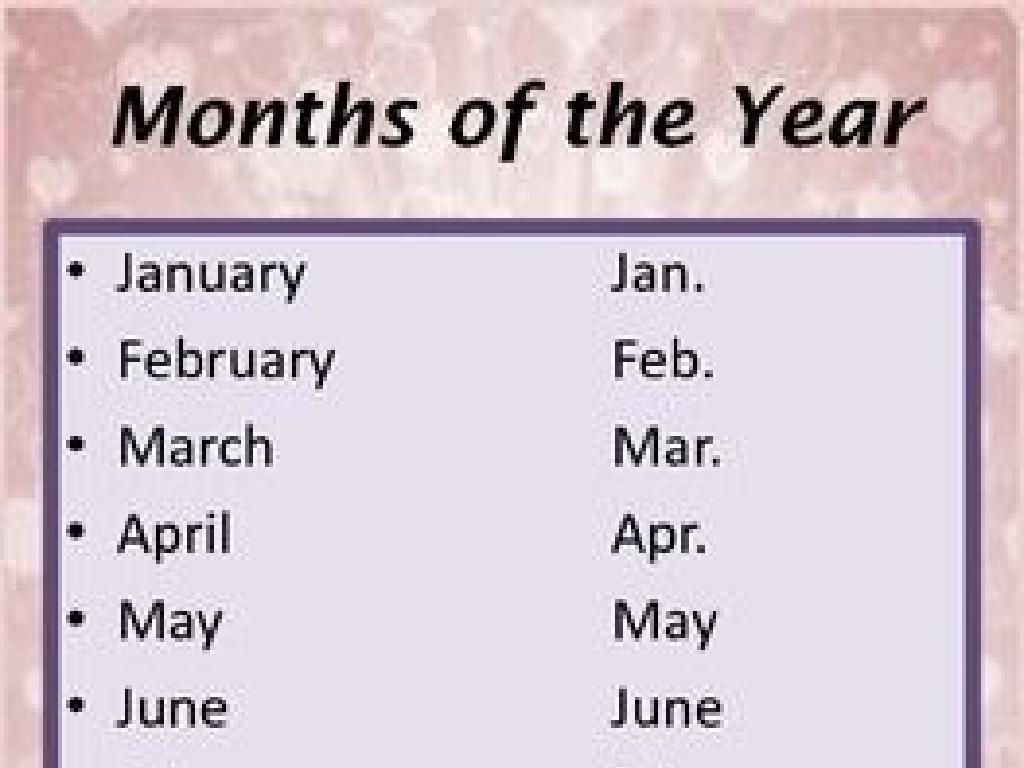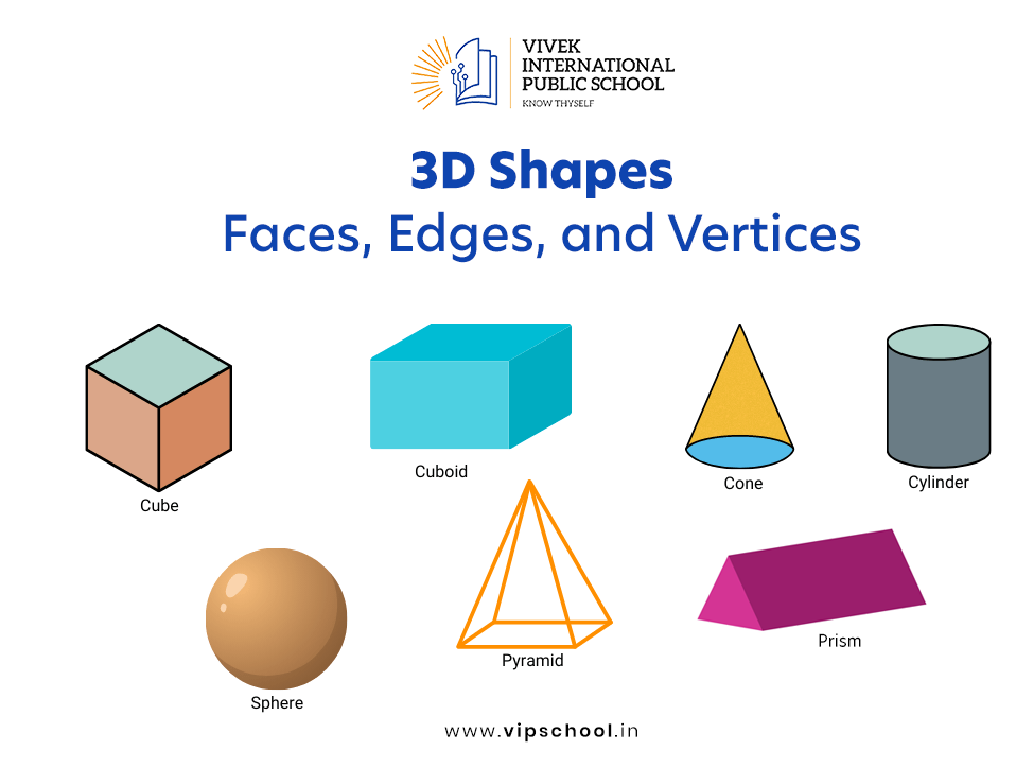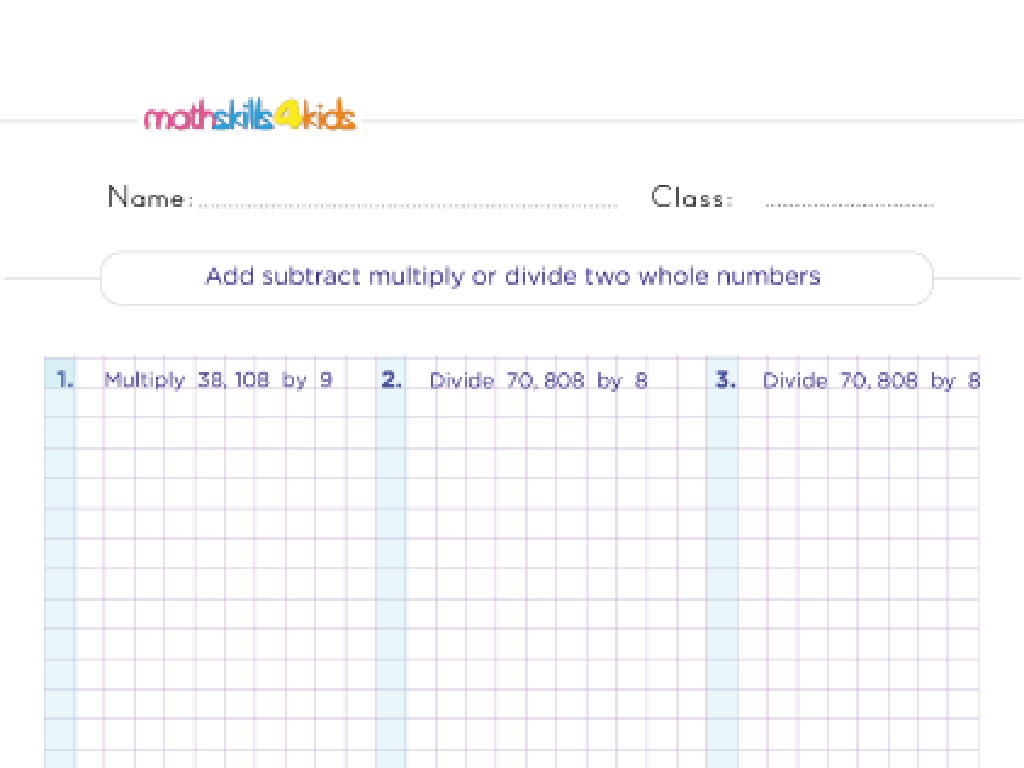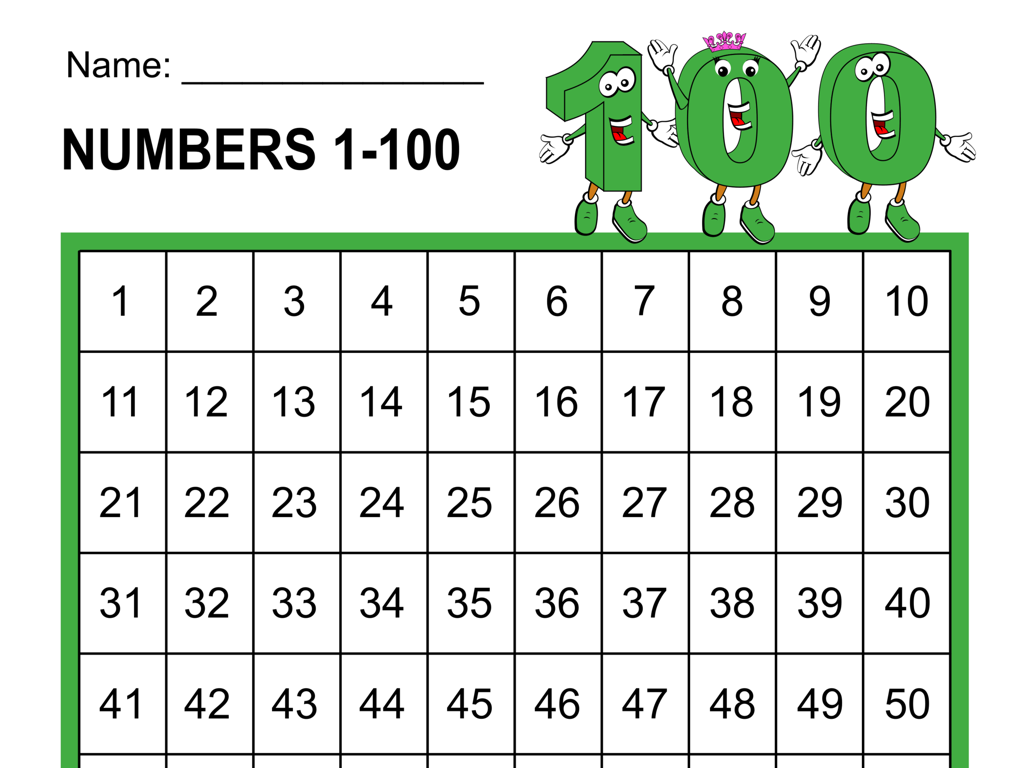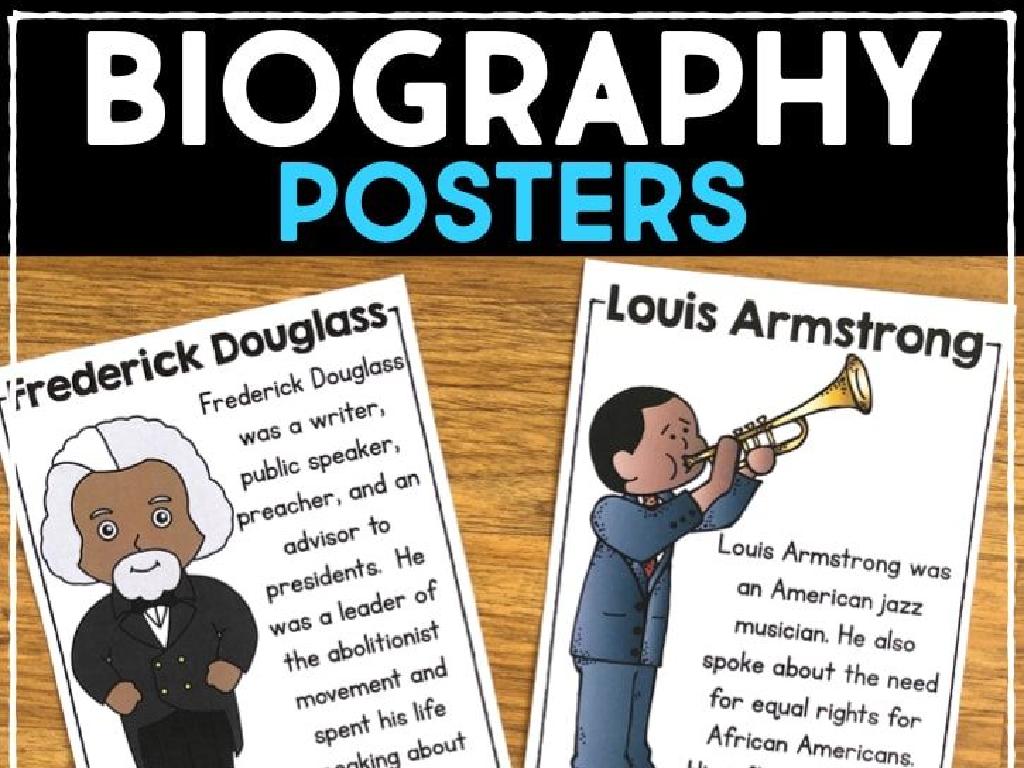What Percentage Is Illustrated?
Subject: Math
Grade: Sixth grade
Topic: Percents
Please LOG IN to download the presentation. Access is available to registered users only.
View More Content
Welcome to Percents!
– Understanding percents
– Percents represent a part out of 100
– Percentages in daily life
– Discounts, statistics, and recipes often use percentages
– Linking percents, fractions, decimals
– 50% is the same as 1/2 or 0.5
– Practice with real examples
– Calculate discounts, or convert fractions to percents
|
This slide introduces students to the concept of percentages and their relevance in everyday life. Begin by explaining that a percent is a way of expressing a number as a fraction of 100. Show how percentages are encountered frequently, from shopping discounts to cooking recipes and even in reporting statistics. Highlight the relationship between percentages, fractions, and decimals, ensuring students understand how to convert between them. Provide real-world examples for practice, such as finding the percentage of a number or converting a fraction from a recipe into a percentage. Encourage students to think of other areas where they have seen percentages used and to bring examples to the next class.
Understanding Percentages
– Definition of a percentage
– A percentage represents a part of a whole divided into 100 equal parts.
– The symbol for percent
– It is denoted by the symbol ‘%’.
– Percentages in different contexts
– Used in grades, discounts, statistics, etc.
– Interpreting percentage values
– Understanding what 25%, 50%, 75% illustrate in real-life scenarios.
|
This slide introduces the concept of percentages to the students. Begin with the definition, emphasizing that a percentage is a fraction of 100. Explain the use of the percent symbol (%) and ensure students can recognize and use it correctly. Provide examples of percentages in various contexts such as test scores, sales discounts, and statistical data to show its practical applications. Help students visualize what different percentages might represent, such as what half-off means in a store sale (50%), or what scoring 75% on a test signifies. Encourage students to think of percentages as another way to express fractions and decimals, and to use them in everyday situations.
Visualizing Percentages with Graphs
– Pie charts show parts of a whole
– Each slice represents a percentage of the total.
– Bar graphs compare amounts
– Each bar’s height shows the percentage of the total amount.
– Interpreting visual percentage data
– Learn to read percentages from different graph types.
– Practice with real-life examples
|
This slide introduces students to the concept of visualizing percentages using pie charts and bar graphs. Pie charts are useful for showing how a whole is divided into parts, with each slice of the pie representing a percentage. Bar graphs, on the other hand, are great for comparing different amounts visually, with the height of each bar representing the percentage of a total amount. Students should learn how to interpret these visual data representations, as they are commonly used in various fields. Provide real-life examples, such as statistics from a school survey or data on favorite ice cream flavors, to help students practice and better understand the concept.
Converting Fractions and Decimals to Percentages
– Convert fractions to percentages
– Multiply the fraction by 100 and add a % sign
– Change decimals to percentages
– Multiply the decimal by 100 and add a % sign
– Work on conversion practice problems
– Solve examples: 1/4 to %, 0.75 to %
– Understand percentage representation
|
This slide introduces the concept of converting fractions and decimals into percentages, which is a fundamental skill in understanding percents. Start by explaining that ‘percent’ means ‘out of 100’ and show how to convert a fraction to a percentage by multiplying by 100. For decimals, illustrate that moving the decimal point two places to the right achieves the same effect. Provide practice problems for students to apply these methods, such as converting 1/4 to a percentage and 0.75 to a percentage. Emphasize that understanding how to convert between these forms helps in visualizing and comparing different quantities as percentages.
Calculating Percentages
– Understanding percentage formula
– Percentage represents a part of a whole as a fraction of 100
– Example: Calculating 20% of 50
– 20% of 50 is found by (20/100) * 50 = 10
– Practice with different numbers
– Use the formula to find percentages of other numbers
– Applying percentages in real life
– How might we use percentages in shopping or in the classroom?
|
This slide introduces the concept of calculating percentages, a fundamental skill in mathematics and daily life. Begin by explaining the percentage formula, which is the rate per 100, and how it can be used to find a portion of a quantity. Use the example of finding 20% of 50 to illustrate the process, which is a straightforward application of the formula. Encourage students to practice with various numbers to solidify their understanding. Discuss real-life applications of percentages, such as calculating discounts during shopping or understanding test scores. Provide additional practice problems for homework to reinforce the concept.
What Percentage is Illustrated?
– Analyze illustrations for percentages
– Look at pie charts or bar graphs to find what part of the whole is represented
– Use visual aids for comprehension
– Visuals can make understanding percentages easier
– Group activity on percentage identification
– Work in groups to determine the percentage each picture represents
– Discuss findings and methods used
– Share your strategies and compare answers with the class
|
This slide introduces the concept of identifying percentages through illustrations, such as pie charts and bar graphs. Visual aids are crucial for helping students grasp abstract concepts like percentages. The group activity encourages collaborative learning and practical application of the lesson. Students will work together to analyze various illustrations and determine the percentage each represents. After the activity, there will be a class discussion to share different strategies used and to ensure a thorough understanding of the concept. The teacher should prepare different illustrations beforehand, ensuring they clearly depict percentages, and guide the students on how to approach the activity.
Real-Life Applications of Percentages
– Calculating shopping discounts
– If a $50 shirt is 20% off, what’s the new price?
– Understanding savings interest
– What does a 5% interest rate on $1000 savings mean for you?
– Figuring out restaurant tips
– How much to tip on a $40 meal with 15% gratuity?
– Practice with real examples
|
This slide aims to show students how percentages are not just numbers on a paper; they are a part of everyday life. Start by explaining how to calculate the final price of an item after a discount is applied. Move on to interest rates and how they affect savings over time. Discuss the customary practice of tipping at restaurants and how to calculate it. Provide real-life scenarios for each case to help students practice and understand the concept of percentages in a practical way. Encourage students to come up with their own examples and solve them.
Class Activity: Percentage Scavenger Hunt
– Search for percentages in the classroom
– Calculate percentage of items/scenarios
– Use real-life examples like ‘What percent of the books are about history?’
– Present findings to the class
– Reflect on the activity
– Think about what you learned from this activity.
|
This interactive class activity is designed to help students recognize and understand percentages in a practical, engaging way. Students will look for real-world examples of percentages within the classroom environment, such as the percentage of windows to walls, or the percentage of a certain color of tiles on the floor. They will then calculate the percentages of various items or scenarios that you provide, such as ‘What percentage of the class are wearing sneakers?’ or ‘If 5 out of 20 books on the shelf are about science, what percentage is that?’ Afterward, students will present their findings to the class, explaining how they calculated the percentages. This will help reinforce their understanding and allow them to see how percentages are a part of everyday life. As a reflection, encourage students to discuss how this activity helped them understand percentages better and how they might use this knowledge outside of school.
Review and Q&A: Understanding Percentages
– Recap today’s percentage lesson
– Open floor for questions
– Discuss difficulties faced
– Were there any tricky problems?
– Share insights on percentages
– Any ‘aha’ moments to share?
|
This slide is meant to consolidate the day’s learning on percentages. Begin with a brief recap of the key points covered in the lesson, ensuring that the concept of percentages as parts of a hundred is clear. Encourage students to ask any questions they may have, fostering an open and supportive environment. Discuss any common difficulties to address misconceptions. Finally, invite students to share any insights or realizations they’ve had during the lesson to reinforce their understanding and celebrate their learning. This interactive session will help gauge student comprehension and provide immediate feedback.
Homework: Mastering Percentages
– Complete the percentage worksheet
– Practice with illustrated examples
– Use illustrations to understand how percentages represent parts of a whole
– Get ready for a percentage quiz
– Review and ask questions if needed
– Go over your notes and ensure you understand how to calculate percentages
|
This homework assignment is designed to reinforce the students’ understanding of percentages. The worksheet will provide a variety of problems to practice calculating percentages in different contexts. Encourage students to visualize percentages through provided illustrations, which can help them grasp the concept of parts per hundred. Remind them that the upcoming quiz will assess their ability to calculate and understand percentages, so they should prepare accordingly. Offer support and encourage students to reach out with questions during the next class or office hours for additional clarification.

